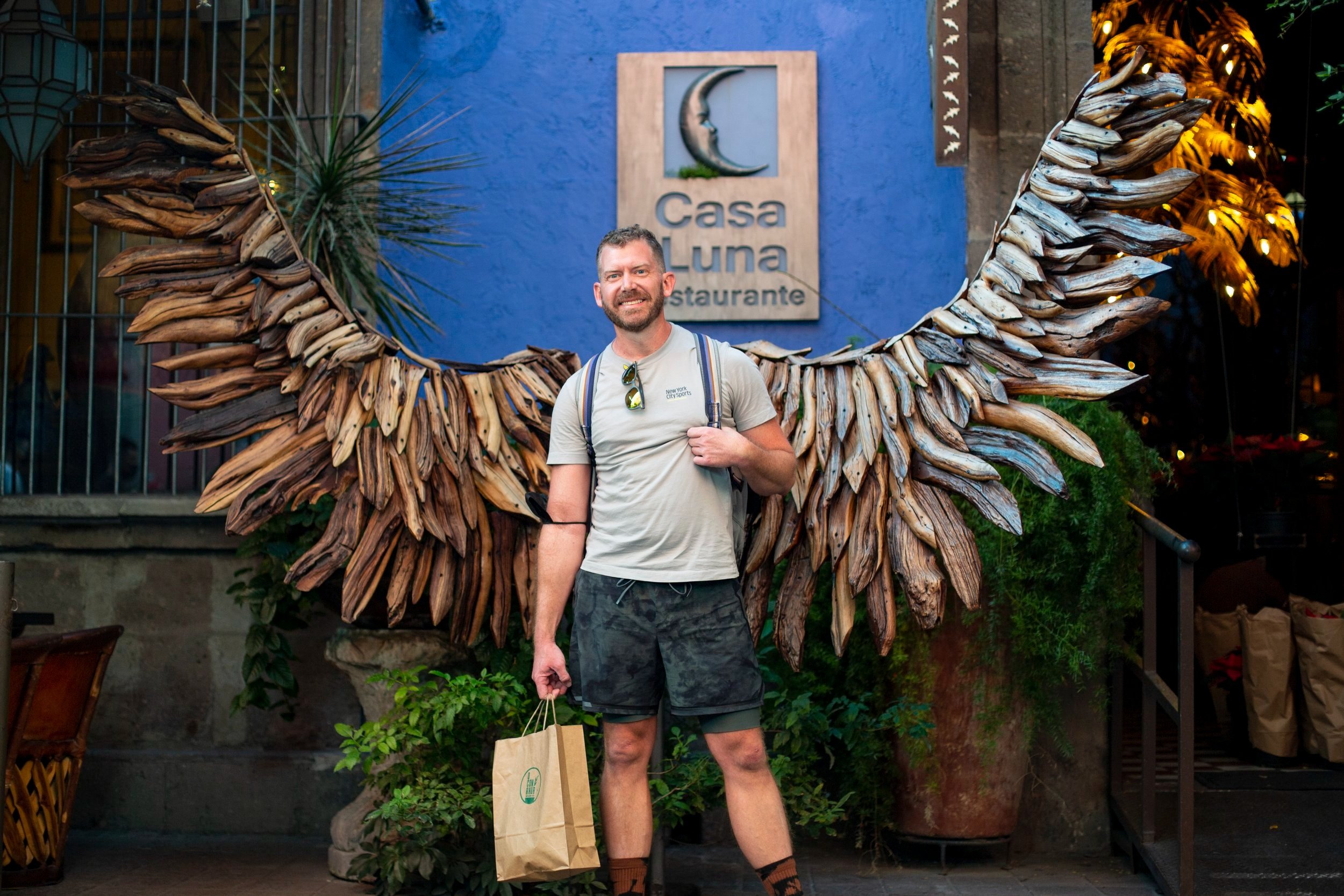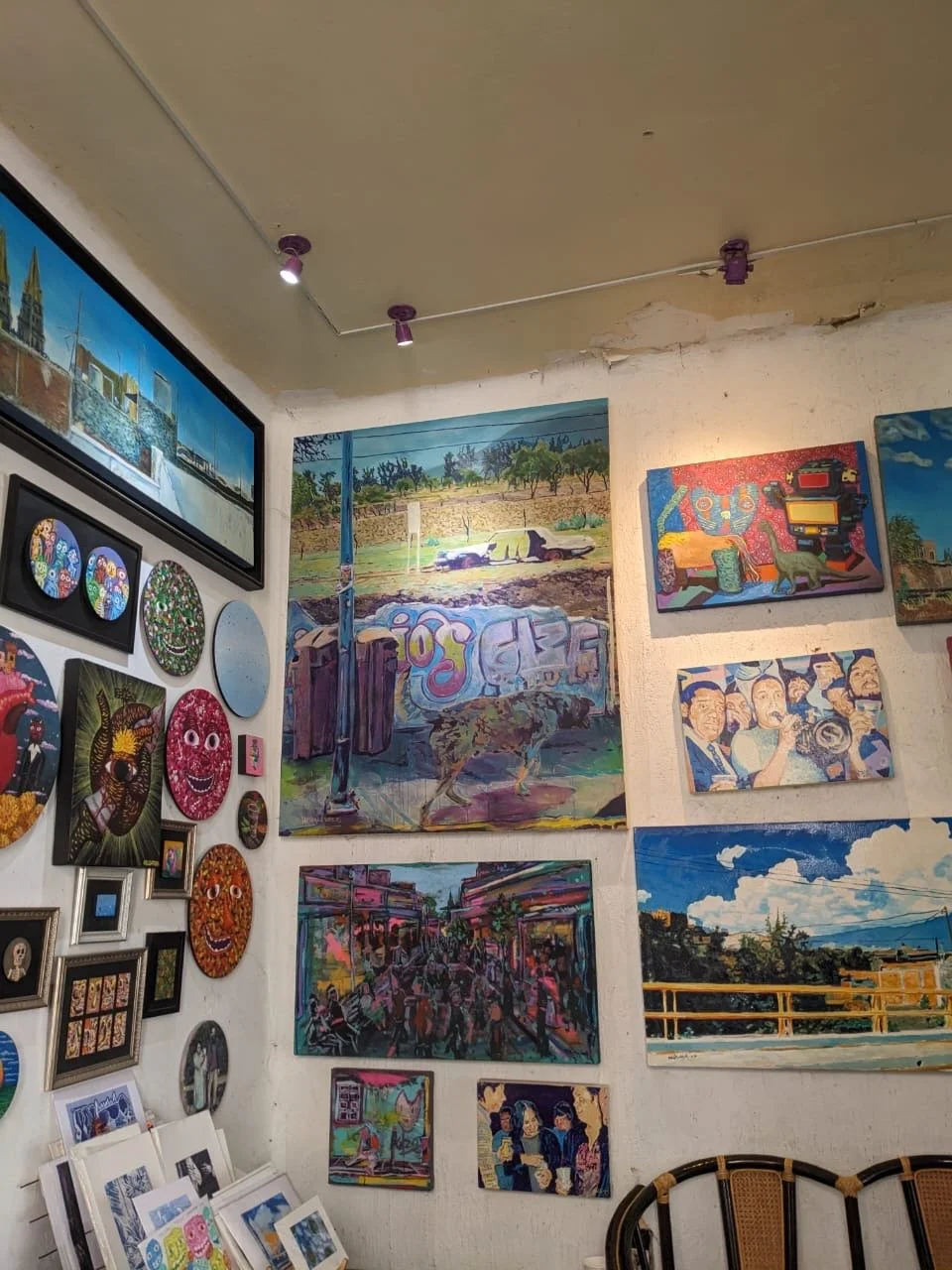Día de Muertos: A Love Story
Intro from Forrest Glover
Every November, Mexico glows with candles, cempasúchil, and stories that bridge worlds. I’ve always found Día de Muertos to be one of the most meaningful traditions in this country—a celebration that fuses memory, beauty, and belonging.
This year, I wanted to share the perspective of Mariana Chávez, one of my assistants and collaborators, and easily one of the best guides I’ve ever known to the cool, creative undercurrent of Guadalajara. Her story captures the heart of Día de Muertos in a way that only someone who’s lived it can.
by Mariana Chavez
Being born and growing up in México, it’s pretty common that during October and early November, you get immersed in the whole Día de Muertos tradition until it simply becomes part of the rhythm of life. You start seeing orange and yellow cempasúchil (marigold) flowers sold on every corner, papelerías (stationery stores) filled with fun, colorful decorations that teachers buy for their classrooms, and kids preparing their calaveritas—playful verses about death—for school contests.
So, the question is: when something is so familiar, how does it become special?
This is the story of how I fell in love with Día de Muertos.
When I was a kid back in the 90s, my aunt was in charge of arranging the family altar, and I would happily help her set it up. We’d bring out the box labeled “ALTAR” that held all the treasures we used year after year: photos of loved ones who had passed, a few of their favorite belongings (like my grandpa’s smoking pipe or my great-grandmother’s tequila), sugar skulls with the family’s names on them, tiny paper-mâché skeletons, sololoy dolls, clay plates and flower pots, candles, papel picado, a glass of water for thirsty souls, and a small bowl of sea salt to protect them. As a final touch, we’d add fresh cempasúchil flowers, pan de muerto (my favorite Mexican pastry), and—if needed—new photos of those who had passed that year.
Every altar is unique, but the intention is always the same: to create a warm, welcoming space for our departed loved ones (pets included). For the living, it’s a nostalgic and loving way to honor memory and presence—the kind of ritual that keeps grief tender.
Years later, when I was 23 and working at an advertising agency, one of our clients—a well-known beer brand—was about to launch a series of cans and bottles in honor of Día de Muertos. I worked in the area often called the voice of the customer, so I was tasked with researching the tradition to uncover its deeper meanings before the creative team began their campaign.
I watched documentaries, read essays, and interviewed people about what Día de Muertos meant to them. That’s when I realized that the common phrase about Mexicans “mocking death” didn’t quite capture the truth. Death is still a tender, sometimes painful topic for many families. What I noticed instead was something far more poetic: a delicate balance between nostalgia, family unity, remembrance, and celebration—with a touch of magic.
Our tradition, I understood, isn’t about death. It’s about love. It’s about the people who are gone from this world but remain deeply present in our hearts. After all, it’s called Día de Muertos (Day of the Dead), not Death Day.
After learning so much about its cultural depth and emotional beauty, I felt compelled to honor it more consciously going forward.
It’s worth noting that Día de Muertos happens around the same time as Halloween (November 1–2), and with Mexico so close to the U.S., the two often blend—especially at costume parties. You’ll see Catrinas everywhere, faces painted as skulls, and decorations inspired by both traditions. Because of this, people often ask which they enjoy more: Halloween or Día de Muertos.
My answer came soon after that beer campaign. A family friend invited us to the Día de Muertos festival in Tlaquepaque. The evening began at Panteón de Belén (Belén Cemetery), where it’s tradition to listen to ghost stories and watch theatrical performances inspired by Mexican legends while visiting famous graves. Later, we walked through downtown Tlaquepaque. The energy was electric—dim lights, music, food stalls, families laughing, Catrinas getting ready for the parade, and a stunning communal altar glowing at the end of the street.
That’s when it hit me.
I love this.
This is ours.
It’s a completely Mexican holiday—unique, tender, and filled with meaning. It represents the ongoing love we carry for those who’ve passed and how we continue to live in the memories of others. I realized this was something to protect, to nurture, and to share. I became a true Día de Muertos believer.
Even though I grew up surrounded by it, it took a deeper look to understand how magical this tradition really is—and how grateful I am to experience it. As a nostalgic person, it fills me with joy to dedicate a few days each year to remember my grandpa, my aunt, my grandma, my dogs, my cousin, and so many others who left too soon.
Every year, when I prepare my little altar, it’s my way of saying: You are not forgotten. You are missed. And you are always bienvenidos in my heart.
If you’d like a broader look at the history and rituals behind this powerful celebration, read Día de los Muertos: A Journey Through Days Honoring Our Beloved Departed.



